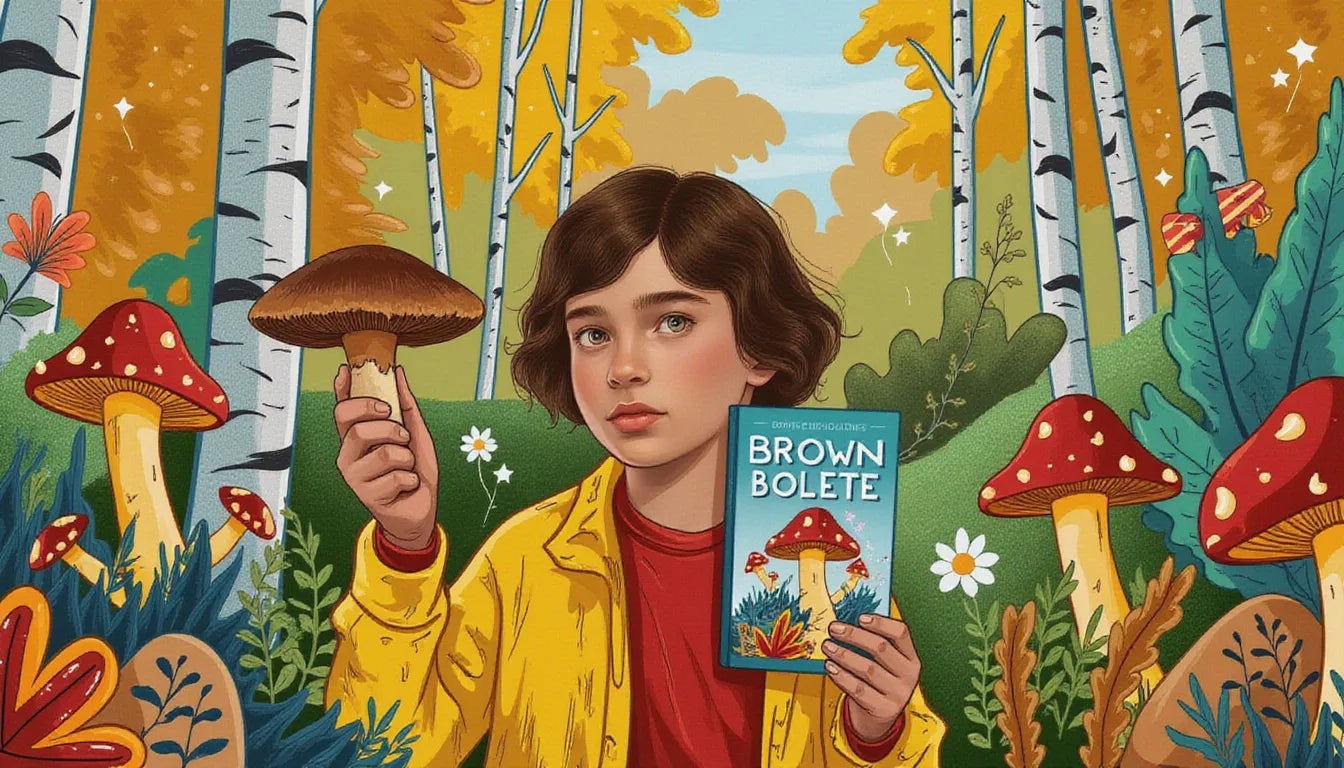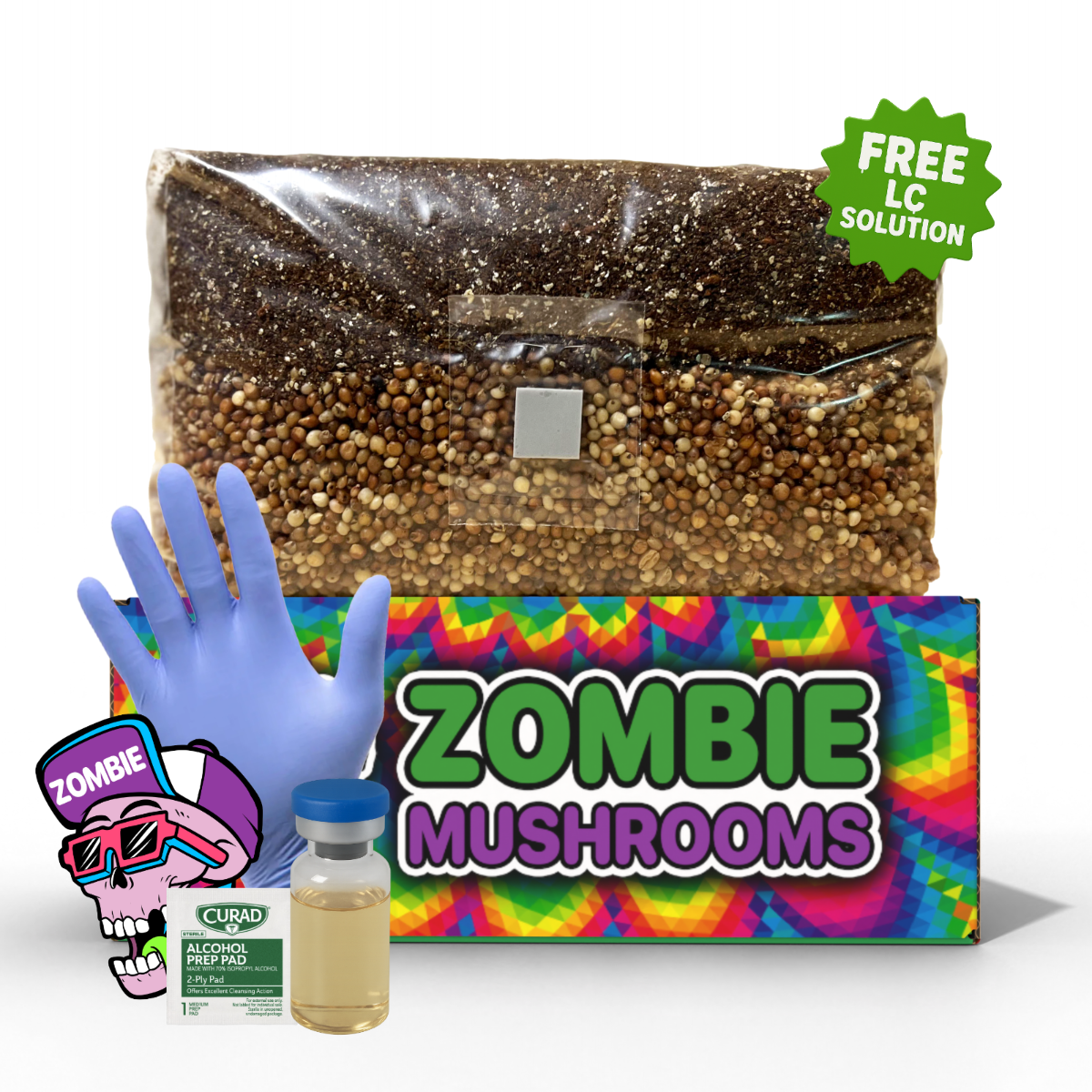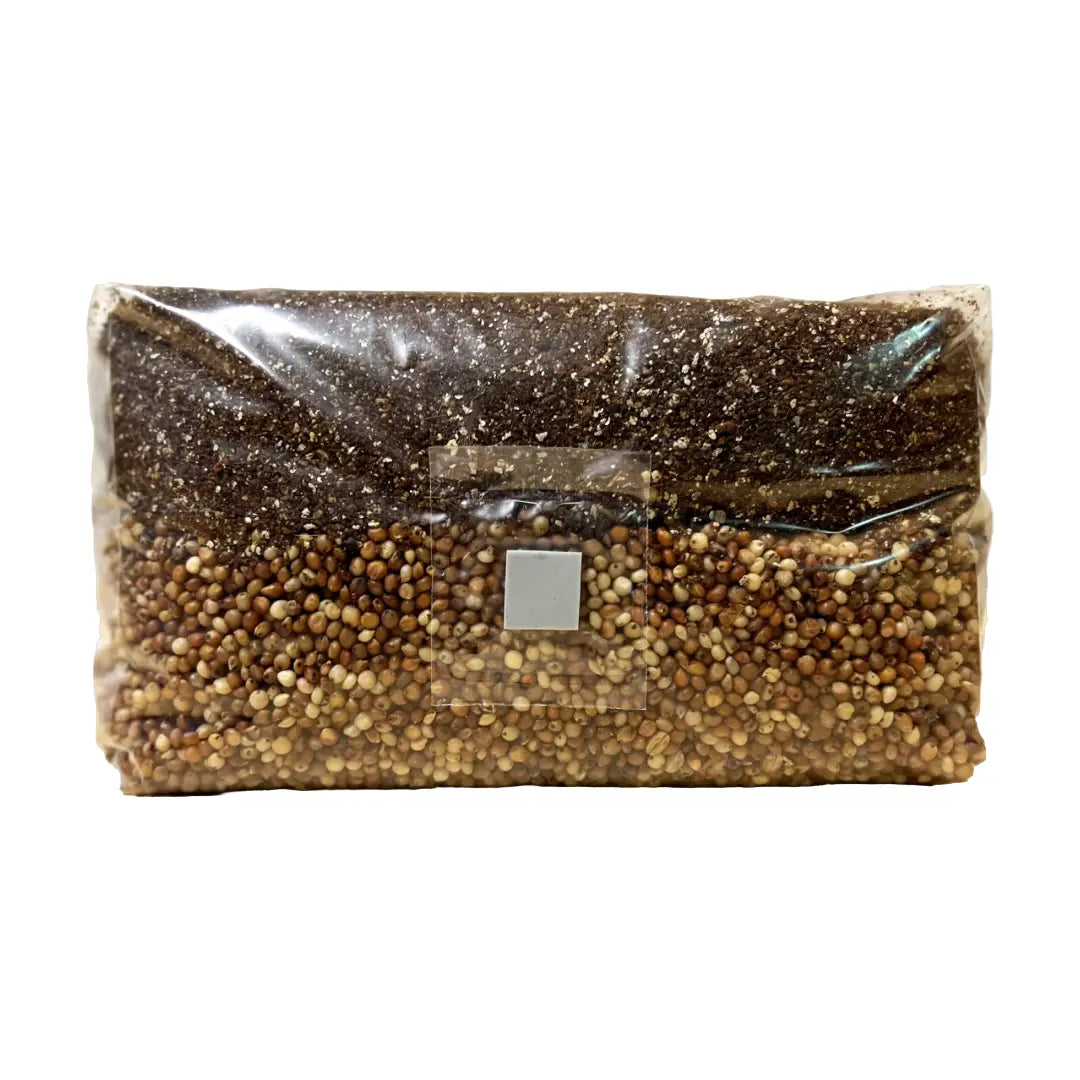⬇️ Prefer to listen instead? ⬇️

- Brown Birch Bolete (Leccinum scabrum) grows only with birch trees, forming a bond with them.
- Some Leccinum species can upset your stomach, especially if you don't cook them enough.
- To tell wild mushrooms apart, you really need to look at many things together: the kind of tree nearby, how it bruises, the feel of the stem, and the smell.
- You can eat the Brown Birch Bolete, but people who know a lot about foraging often say it tastes "disappointing."
- Even mushrooms you can eat might bother some people. It's smart to try a small amount that is well cooked first.
Finding your own mushrooms from the wild can be a fun and rewarding outdoor activity—but you must take species identification seriously. The Brown Birch Bolete (Leccinum scabrum), a mushroom with pores instead of gills often found near birch trees, is commonly seen in late summer and early autumn. This article looks at what makes this bolete special, whether you can eat it, and how to pick it safely. It also gives important advice for telling wild mushrooms apart, while reminding new growers that starting with something like a mushroom monotub kit at home can be a safer way to learn before heading into the woods.

What Are Boletes?
Boletes are a distinct kind of mushroom, known for the spongy, porous material under their caps instead of gills. They belong to the Boletaceae family and include several main groups like Boletus, Leccinum, and Suillus. While common mushrooms like button or portobellos have thin gills under their caps, boletes have tube-like parts that release spores through tiny holes. This spongy layer can be different colors—white, yellow, red, or gray—and its color might change as the mushroom gets older or when it's cut.
One main thing about boletes is that most of them are mycorrhizal fungi. This means they form helpful partnerships with certain types of trees. Their thin threads (mycelium) connect to tree roots underground, trading water and food in a network where each helps the other. Because of this, boletes often grow near the same trees year after year. So, knowing trees is a very helpful skill for finding mushrooms.
Knowing which boletes grow with which trees gives you a head start when you are trying to tell wild mushrooms apart. For example:
- Boletus edulis (Cep/Porcini) usually grows near beeches, pines, or spruces.
- Leccinum scabrum (Brown Birch Bolete) grows almost only with birch trees.
- Suillus species are different, but many like trees with cones, such as larch or pine.
Being familiar with the trees overhead can help you find spots where mushrooms are likely to be growing below.

Spotlight on Leccinum scabrum (Brown Birch Bolete)
The Brown Birch Bolete is a type of bolete mushroom found over a large area, including Europe, North America, and Asia. Its scientific name is Leccinum scabrum. This fungus lives in a helpful partnership with birch trees and is usually seen from late July through October. How it looks changes a bit depending on how old it is and what the weather is like, but these traits are considered key for identification:
- Cap: Medium brown to grey-brown. It is rounded when young and flattens out as it gets older. It is usually smooth but can crack a little in dry weather.
- Pores/Tubes: A pale cream to grey sponge under the cap, not gills. These pores might get a little darker with age and can bruise grey, but they do not usually turn bright blue or red like some other boletes.
- Stem: Thin and fairly tall for the size of its cap. It has rough dark brown to black flecks or "shaggy hairs." These parts give the species its Latin name, scabrum, which means "scabby."
- Flesh: Whitish. It usually does not change color when cut.
- Smell: Gentle, like earth or mushrooms. It is never sour or smells like fish.
Even though it can get quite big—often having caps 10–15 cm across—the Brown Birch Bolete can hide well in fallen leaves, especially in birch woods that are full of dusky brown colors in autumn.
Know Your Trees
Boletes have strong connections with the trees they grow with. This means that knowing the local tree species where you are can give you a big help when you look for mushrooms. Many wild mushrooms you might find, especially boletes, need these tree relationships to live. They form root and spore networks underground that you cannot see, but they are very important for the forest ecosystem.
Here is a closer look at common pairs:
| Mushroom Species | Tree(s) It Grows With |
|---|---|
| Brown Birch Bolete | Birch (Betula) |
| Cep / Porcini (Boletus edulis) | Beech, Spruce, Fir |
| Suillus luteus (Slippery Jack) | Pine |
| Larch Bolete (Suillus grevillei) | Larch |
| Orange Birch Bolete (Leccinum versipelle) | Birch |
Being able to tell the difference between oak, birch, beech, and spruce—even just by the shape of the leaves or the feel of the bark—will much improve your chances of telling wild mushrooms apart correctly.

Forager’s Friend or Foe?
Bcause it grows in a way you can often predict and is fairly easy to identify compared to other wild mushrooms, the Brown Birch Bolete is a decent "starter" mushroom for people new to foraging. It is not very likely to be confused with something deadly, and it gives you a good chance to practice noticing bolete features and how they relate to the environment.
Still, being edible does not always mean your body will digest it well. Some Leccinum species—especially the Orange Birch Bolete (L. versipelle)—have been linked to stomach problems in some people who are sensitive. People don't fully understand why this happens, but it might be because of natural chemicals that break down when the mushroom is cooked properly. So, you must cook it well. It's not something you can skip.

The Wrong Bolete: Lookalikes and Dangers
Even though they have clear traits, boletes can be easily mistaken for other types because there are many kinds, and they can look different even within the same kind. Some mushrooms that might look like the Brown Birch Bolete are:
- Leccinum variicolor – Has similar flecks on the stem, but the colors change more.
- Leccinum versipelle (Orange Birch Bolete) – More brightly colored when young but often darker as it gets older.
- Pseudoboletus parasiticus – Often found near earthballs (Scleroderma). It is much smaller and people do not think it tastes good.
- Tylopilus felleus (Bitter Bolete) – Tastes very bitter. You should not eat it, even though it is not poisonous. It grows with trees with cones and people often mix it up with kinds you can eat.
Some boletes that stain red or blue can be outright poisonous. Don't trust common myths like, "If it doesn't stain, it's safe," or "Worms eat it, so I can too." These ideas can lead to dangerous mistakes. You need to look at the habitat, how it is built, how it bruises, and its spore print to tell it apart correctly. No single quick way is safe by itself.

Key Identification Features to Check
To learn how to tell a Brown Birch Bolete apart correctly—or any wild mushroom—you need to look at several things:
- Habitat: Found under birch trees in woods with leaves or at the edge of forests.
- Cap Shape & Texture: Usually dome-shaped when young; smooth or a little cracked; the skin is not slimy.
- Flecks on Stem: These unique spots are dark, rough, and stand out against the pale stem.
- Spongy Underside: The pores are pale when young and turn dull grey as it gets older.
- Color Reaction: Does not change color much when cut, unlike many boletes.
- Feel: The flesh feels soft or a little grainy when cooked. This is another difference from boletes that are firmer, like porcini.
Taking photos, making spore prints, or looking closely with a microscope (for people who know how) can help you tell apart species that look similar.

A Forager’s First Taste: Personal Testing with Caution
It had a mild taste that was okay. Nothing very special, but certainly not bad. When fried in butter and put on toast with some seasoning, the Brown Birch Bolete worked well as a filler, especially when there were not many mushrooms with better flavor.
When you try any new wild mushroom, you need to go slow, especially with Leccinum species. Start with just a few spoonfuls of mushroom that is cooked well. Have water ready, and pay attention to how your body feels over the next day.

Other Bolete Adventures: Unidentified Xerocomus
In the same notes about foraging, another bolete was found that looked like Xerocomus ferrugineus or X. subtomentosus. Xerocomus species are mushrooms that are not very firm and taste earthy. They have subtle traits. Some you can eat, others are not thought of as good to eat.
Even though these mushrooms were eaten after being cooked a lot, the forager had stomach problems for 12 to 24 hours later. No one knows if this was from telling it apart wrong, calling it the wrong name, or just a personal reaction. But it shows clearly that even mushrooms you can eat might cause problems. This depends on how you cook them and how your own body works.

Tips for Safe Tasting and Consumption
Whether you are just starting or have been hunting mushrooms for a long time, you should always do these things:
- Always cook wild mushrooms completely. Never eat any wild mushroom raw, especially Leccinum.
- Try a small amount first. Wait 12 to 24 hours before eating a regular amount.
- Keep in mind that people are different. What is safe for one person might not be safe for another.
- Take pictures of what you find from all sides. This helps you identify it later and fix any mistakes.
- Check more than one source. Don't trust just one book or website.
Sticking to careful habits will keep you safe and help you feel more sure about telling wild mushrooms apart.

Edibility vs. Culinary Worthiness
So where does the Brown Birch Bolete fit in with other mushrooms you might find?
- Can you eat it?: Yes, most people think it is safe if cooked properly.
- Taste: Mild. Sometimes a bit nutty but often plain.
- Feel: Soft and spongy when old; firmer when picked young.
- How to use it: Best used to add bulk to a dish with other mushrooms. It is rarely good enough to be the main thing you eat.
People who forage often use it as a second mushroom—to make stews, risottos, or mushroom mixes bigger without making the flavor too strong.

Cultivation as a Safer Alternative
If you do not like the uncertainty of hunting in the wild, you could grow mushrooms at home instead.
Zombie Mushrooms offers simple setups for beginners to grow mushrooms. These include:
- Grow bags with mycelium ready to grow mushrooms
- Sterile agar plates to make copies of mushrooms safely
- Home mycology labs to help you grow your own
Growing mushrooms lets you see every step of growth—from the mycelium to picking—which means there is no risk of telling them apart wrong. It also helps you understand more about how fungi grow.

Combining Skills: The Wise Forager-Grower
Foraging and growing are not opposites—they are skills that go well together. People who forage and learn to grow mushrooms feel more respect for how fungi grow in nature. Also, people who grow mushrooms and learn to identify them in the forest understand more about where fungi live in nature.
Knowing about mushrooms in a whole way—both in the wild and when growing them carefully—makes your knowledge wider and makes you better at spotting things.
Final Thoughts and Resources
The Brown Birch Bolete might not be the most praised mushroom for eating, but it is a good kind for practicing, learning, and finding something to cook when it is in season. Whether you decide to eat it or not, learning to find it teaches useful things about wild mushroom identification, how trees and plants work together, and how to be safe with mushrooms.
If you want to learn more:
✅ Improve your mushroom skills with home growing kits.
✅ Learn more about wild species by using trusted field guides.
✅ Go look around your local woods—and your kitchen—safely and carefully.



